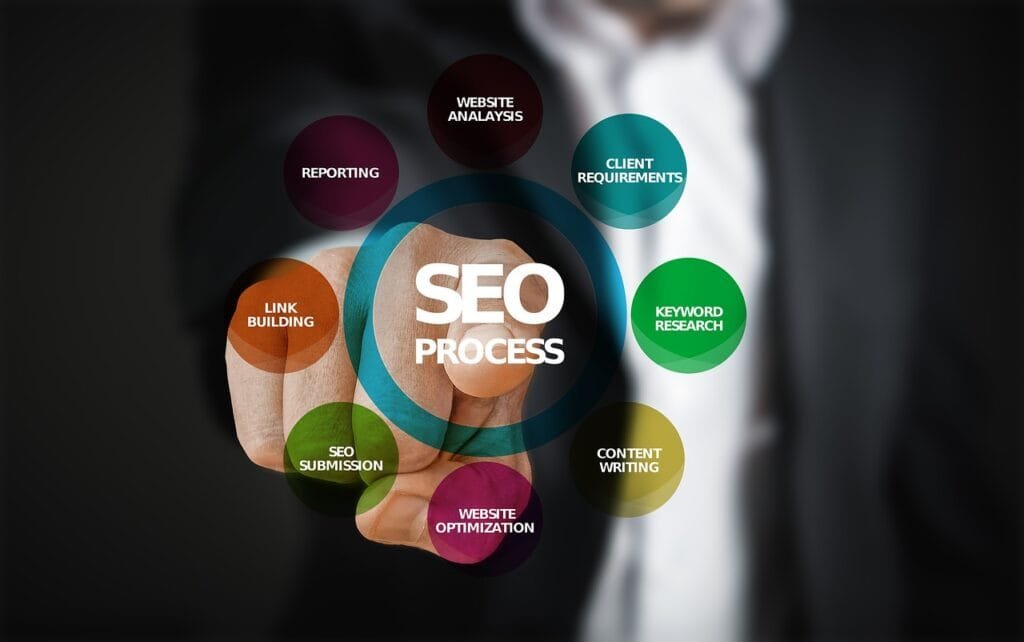This Article has been revised, edited and added to, by Poulomi Chakraborty.
- 1. Understanding the SEO Landscape for Sustainability-Focused Startups
- 2. Keyword Research for Sustainable Stories
- 3. Content Strategy: Crafting Compelling Sustainable Stories
- 4. On-Page SEO: Optimizing Your Sustainable Content
- 5. Technical SEO for Sustainability Startups
- 6. Local SEO for Sustainability-Focused Startups: Connecting with Communities
- 7. Off-Page SEO for Green Entrepreneurs
- The Power of Backlinks in SEO
- Effective Guest Blogging for Green Businesses
- Leveraging Social Media for SEO Benefits
- 8. Measuring Success: Tracking Your Sustainable SEO Efforts
- 9. Staying Ethical and Sustainable in SEO
- Conclusion: Your Sustainable SEO Journey Begins
In an era where environmental consciousness is on the rise, sustainability-focused startups have a unique opportunity to make a lasting impact. By harnessing the power of Search Engine Optimization (SEO), these startups can effectively promote their sustainable stories, reach a broader audience, and create a more sustainable future. This comprehensive guide will take you through the intricacies of SEO for sustainability-focused startups, offering actionable tips and strategies to help your green business thrive online.
1. Understanding the SEO Landscape for Sustainability-Focused Startups

The Intersection of Sustainability and SEO
In today’s digital age, sustainability-focused startups have an incredible opportunity to make a significant impact on the world. These businesses are not only striving to create eco-friendly products and services but also to spread awareness about the importance of sustainability. This is where the power of Search Engine Optimization (SEO) comes into play.
SEO is the practice of optimizing your online content so that it ranks higher in search engine results pages (SERPs). For startups with sustainability at their core, SEO can be a powerful tool to connect with like-minded individuals, share their stories, and drive change.
Why SEO Matters for Sustainable Startups
SEO matters for sustainability-focused startups for several reasons:
- Increased Visibility: SEO helps your sustainable stories and products become more visible to your target audience. When people search for sustainable solutions, your startup should be front and center.
- Educational Platform: SEO allows startups to educate their audience about sustainability issues and solutions. By providing valuable content, you can inspire and inform visitors about the importance of eco-friendly practices.
- Long-Term Impact: Just as sustainable practices are about long-term impact, SEO is a long-term strategy. When you invest in SEO, you’re building a sustainable online presence that can benefit your startup for years to come.
Long-Term Benefits of SEO for Green Entrepreneurs
One of the most significant advantages of SEO is its long-term sustainability. Unlike paid advertising that stops generating traffic when you stop spending money, SEO continues to deliver results over time. By consistently creating valuable content and optimizing your website, you build a lasting online presence that can drive traffic and conversions for years to come.
As more consumers seek out sustainable products and solutions, the collective impact of sustainable startups can be substantial. SEO not only increases your visibility but also contributes to the broader mission of promoting sustainability and responsible business practices.
2. Keyword Research for Sustainable Stories

Keyword research is the foundation of a successful SEO strategy for sustainability-focused startups. It’s the process of identifying and targeting the specific keywords and phrases that potential customers use when searching for sustainable products, services, and information. In this section, we’ll delve into the intricacies of keyword research and how to uncover the right keywords to promote your sustainable stories effectively.
The Basics of Keyword Research
Keyword research involves understanding the language your target audience uses when searching online. It’s about getting into the minds of potential customers and discovering the terms they’re likely to type into search engines. Effective keyword research enables you to optimize your content, making it more likely to appear in search results when people search for those keywords.
Start by brainstorming a list of relevant keywords and phrases related to your sustainability-focused startup. Think about the products or services you offer, the sustainability issues you address, and the broader topics in the eco-friendly and green living space. These initial keywords will serve as a foundation for your research.
Choosing Keywords Aligned with Sustainability Values
For sustainability-focused startups, it’s essential to choose keywords that not only drive traffic but also align with your values. These keywords should reflect your commitment to eco-friendly practices, environmentally conscious products, and social responsibility. For example, if you offer sustainable clothing, keywords like “organic clothing,” “ethical fashion,” or “sustainable apparel” would be relevant.
Consider that your target audience is likely searching for information related to sustainability and green living. Therefore, incorporating keywords that address these broader topics can help you reach a wider audience. Think about terms like “sustainable lifestyle tips,” “reduce carbon footprint,” or “eco-conscious living.”
Tools for Effective Keyword Research
To uncover the most relevant and effective keywords for your sustainability-focused startup, you can leverage various keyword research tools and techniques. Some popular options include:
1. Google Keyword Planner: This free tool by Google provides insights into search volumes, competition, and keyword ideas. It’s a great starting point for keyword research.
2. SEMrush: A comprehensive SEO toolkit that offers keyword research features, competitive analysis, and more. It provides valuable data to help you refine your keyword strategy.
3. Ahrefs: Known for its backlink analysis, Ahrefs also offers robust keyword research capabilities. You can identify keyword opportunities and assess their difficulty.
4. Ubersuggest: Neil Patel’s Ubersuggest is a user-friendly tool that provides keyword suggestions, search volume data, and keyword difficulty scores.
5. Google Trends: This tool helps you track the popularity of specific keywords over time. It’s useful for identifying seasonal trends and monitoring the relevance of keywords.
As you use these tools, pay attention to metrics like search volume, keyword difficulty, and the relevance of keywords to your sustainability-focused startup. Aim for a mix of high-volume keywords to attract a broad audience and low-competition keywords to increase your chances of ranking.
Keyword research is an ongoing process, and staying up-to-date with trends ensures your content remains relevant and competitive in the ever-changing digital landscape.
3. Content Strategy: Crafting Compelling Sustainable Stories

Crafting compelling and informative content is a fundamental aspect of SEO for sustainability-focused startups. Your content serves as a bridge between your brand’s values and the interests of your target audience. In this section, we’ll explore how to create a content strategy that effectively communicates your sustainable stories and resonates with your audience.
Connecting with Your Target Audience
Understanding your target audience is at the heart of creating content that resonates. Sustainability-focused startups often cater to an audience passionate about eco-friendly practices, environmental conservation, and ethical consumption. To connect with this audience:
1. Audience Research: Conduct thorough research to understand the preferences, interests, and pain points of your target audience. What sustainability-related topics are they passionate about? What questions do they have? This research informs your content choices.
2. Define Your Brand Voice: Develop a brand voice that aligns with your sustainability values and speaks directly to your audience. Are you informative and educational, passionate and activist, or friendly and approachable? Consistency in your tone builds trust.
3. Tell Authentic Stories: Authenticity is crucial in sustainability marketing. Share genuine stories about your startup’s journey towards sustainability. Highlight your eco-friendly practices, responsible sourcing, or community involvement. Authentic stories resonate with consumers and reinforce your commitment to green values.
The Role of High-Quality, Original Content
Creating high-quality, original content is vital for both SEO and building trust with your audience. Here’s why it matters:
1. Google’s Preference for Quality: Search engines like Google prioritize high-quality content in their rankings. This means content that is informative, well-researched, and free from errors or plagiarism.
2. User Engagement: Quality content keeps visitors engaged, reducing bounce rates and increasing the time users spend on your site. Engaged visitors are more likely to explore your brand and convert into customers.
3. Establishing Authority: Consistently producing authoritative content positions your brand as an industry leader. When consumers see you as a trusted source of information, they are more likely to choose your products or services.
Balancing SEO and User Experience
While optimizing for search engines is essential, it’s equally important to provide a positive user experience. A seamless, user-friendly website enhances your brand’s reputation and encourages visitors to stay and explore. Consider these factors:
1. Mobile Optimization: With mobile devices being the primary means of online access for many users, ensure your website is mobile-friendly. Google rewards mobile-optimized sites with higher rankings.
2. Page Load Speed: A fast-loading website not only pleases users but also ranks better in search results. Compress images, minimize scripts, and use Content Delivery Networks (CDNs) to speed up your site.
3. Structured Content: Organize your content using headers (H1, H2, H3, etc.) to improve readability and navigation. Clear structure helps users find the information they seek and encourages them to stay on your site.
4. Avoid Keyword Stuffing: While using keywords strategically is essential, avoid overloading your content with them. Keyword stuffing can harm user experience and result in search engine penalties.
5. Optimize for Accessibility: Make your content accessible to all users, including those with disabilities. Use alt text for images, provide text transcripts for videos, and ensure your website is navigable via keyboard.
A well-crafted content strategy strikes a balance between SEO and user experience, ensuring that your sustainability-focused startup not only ranks well but also provides value to visitors. It’s the foundation upon which all other SEO efforts are built.
4. On-Page SEO: Optimizing Your Sustainable Content

On-page SEO involves optimizing individual pieces of content on your website to improve their visibility in search engine results. This optimization ensures that search engines can understand your content and rank it appropriately. In the context of sustainability-focused startups, on-page SEO is your tool for showcasing your eco-friendly products, sharing your green initiatives, and connecting with an audience that values sustainability. In this section, we’ll explore the key elements of on-page SEO and how to apply them effectively.
Crafting SEO-Friendly Titles and Meta Descriptions
Titles and meta descriptions play a crucial role in on-page SEO. They serve as the first impression users have of your content in search results and influence their decision to click through. Here’s how to optimize them for sustainability-focused startups:
1. Keyword Placement: Include your target keyword in the title and meta description naturally. This helps search engines understand the content’s topic.
2. Clarity and Relevance: Ensure your titles and meta descriptions accurately reflect the content’s topic and value to users. Misleading or irrelevant titles can lead to high bounce rates.
3. Engagement: Craft compelling titles and meta descriptions that entice users to click. Pose questions, offer solutions, or highlight the unique aspects of your sustainable content.
4. Length: Keep titles under 60 characters and meta descriptions under 160 characters to ensure they display correctly in search results.
5. Uniqueness: Avoid using duplicate titles and meta descriptions across your website. Each piece of content should have a unique, descriptive title and summary.
Using Headers and Subheadings for Structured Content
Headers (H1, H2, H3, etc.) provide structure to your content, making it more readable for both users and search engines. Here’s how to use headers effectively:
1. H1 Tag: Use the H1 tag for the main title of your page or article. This tag signals the primary topic to search engines.
2. Hierarchy: Organize your content with a hierarchy of headers. H2 tags for section titles, H3 tags for subsections, and so on. This helps users navigate and understand your content.
3. Keywords: Incorporate relevant keywords naturally in your headers. This reinforces the topic and signals its importance to search engines.
4. Consistency: Maintain a consistent header structure throughout your content. Avoid skipping header levels (e.g., going from H2 to H4) as it can confuse both users and search engines.
The Importance of Internal and External Links
Internal and external links are valuable for on-page SEO:
Internal Links:
Internal links are links within your website that connect one page to another. They help spread authority throughout your site and guide users to related content. Ensure that:
- Anchor text (the clickable text of the link) is descriptive and relevant to the linked page.
- You avoid overloading a page with too many internal links, which can be overwhelming.
External Links:
External links point to reputable sources outside your website. When you use external links, consider the following:
- Link to high-authority, trustworthy websites. This enhances your content’s credibility.
- Use the “nofollow” attribute for external links that you don’t want to pass link equity to. This is common for sponsored content or user-generated content.
Image Optimization for Sustainable Content
Images enhance the visual appeal of your content, but they also need optimization for SEO:
1. File Size: Compress images to reduce file size without compromising quality. Smaller images load faster, improving user experience and SEO.
2. Alt Text: Include descriptive alt text for every image. This provides context for visually impaired users and helps search engines understand the content of the image.
3. File Names: Use descriptive file names for your images, incorporating relevant keywords when possible.
4. Responsive Design: Ensure that images are responsive and adjust to different screen sizes, especially for mobile users.
Optimizing these on-page elements not only enhances your sustainable content’s visibility in search results but also improves the overall user experience on your website. Well-structured, informative, and engaging content is more likely to rank well and resonate with your eco-conscious audience.

Related: Check out our free SEO suite

5. Technical SEO for Sustainability Startups
Technical SEO focuses on optimizing the technical aspects of your website to improve its performance in search engine rankings. A well-optimized website not only ranks higher but also provides a better user experience. In this section, we’ll explore key technical SEO considerations for sustainability-focused startups.
Website Speed and Its Impact on SEO
Website speed is a critical factor in SEO. Slow-loading websites frustrate users and can lead to higher bounce rates. Search engines, like Google, consider page speed when ranking websites. Here’s how to improve website speed:
1. Image Optimization: Compress and resize images to reduce file sizes without sacrificing quality. Use modern image formats like WebP for better compression.
2. Minimize HTTP Requests: Reduce the number of elements on your web pages (e.g., scripts, stylesheets, and images) to minimize HTTP requests, which can slow down page loading.
3. Enable Browser Caching: Implement browser caching to store static assets (e.g., images, stylesheets) in a user’s browser. This reduces the need to re-download assets on subsequent visits.
4. Content Delivery Network (CDN): Use a CDN to distribute content to servers geographically closer to users, reducing latency and improving loading times.
5. Mobile Optimization: Ensure your website is responsive and performs well on mobile devices. Google uses mobile-first indexing, so mobile-friendliness is crucial for SEO.
Mobile Optimization for Sustainability
With the increasing use of mobile devices, mobile optimization is no longer optional. It’s a sustainability practice, too, as optimized mobile experiences consume less energy. Consider these mobile optimization strategies:
1. Responsive Design: Use responsive design principles to create a website that adapts seamlessly to various screen sizes and devices.
2. Mobile-Friendly Navigation: Simplify navigation menus and buttons for mobile users. Ensure that all content is accessible and legible on smaller screens.
3. Accelerated Mobile Pages (AMP): Implement AMP to create lightweight, fast-loading versions of your content for mobile users.
4. Voice Search Optimization: Optimize your content for voice search queries, which are common on mobile devices. Use natural language and answer user questions concisely.
XML Sitemaps and Robots.txt: Tools for SEO
XML sitemaps and robots.txt files are essential tools for technical SEO:
1. XML Sitemaps: Create an XML sitemap that lists all the pages on your website. Submit it to search engines like Google to help them crawl and index your site efficiently.
2. Robots.txt: Use the robots.txt file to instruct search engine crawlers on which parts of your site to crawl and which to exclude. Ensure it’s configured correctly to prevent indexing of sensitive or duplicate content.
3. Schema Markup: Implement schema markup (structured data) to provide search engines with more information about your content. This can lead to rich snippets and enhanced search results.
4. SSL Certificate: Secure your website with an SSL certificate, which not only boosts security but also improves search engine rankings.
Technical SEO may seem complex, but it plays a crucial role in the performance and sustainability of your sustainability-focused startup’s online presence. By optimizing website speed, ensuring mobile compatibility, and employing proper technical tools, you create a strong foundation for your SEO efforts.
6. Local SEO for Sustainability-Focused Startups: Connecting with Communities

Local SEO is a powerful strategy for sustainability-focused startups aiming to connect with their local communities and environmentally conscious consumers nearby. In this section, we’ll delve into the significance of local SEO and how you can leverage it to promote your sustainable initiatives and products locally.
The Significance of Local SEO
Local SEO focuses on optimizing your online presence to attract local customers and promote your brand within a specific geographic area. For sustainability-focused startups, local SEO offers several benefits:
- 1. Targeted Audience: Local SEO helps you reach consumers in your immediate vicinity who are more likely to visit your physical location or engage with your eco-friendly offerings.
2. Competitive Advantage: Many sustainability-focused startups operate at the local level. By optimizing for local search, you gain an advantage over competitors who may overlook this strategy.
3. Google My Business (GMB): A well-optimized Google My Business listing can significantly improve your local visibility. It’s often the first thing users see in local search results.
Claiming and Optimizing Your Google My Business Listing
Your Google My Business (GMB) listing is at the heart of local SEO. Here’s how to make the most of it:
1. Claim Your Listing: If you haven’t already, claim and verify your GMB listing. Ensure that all business information, such as your name, address, phone number, and website, is accurate.
2. Complete Your Profile: Fill out every section of your GMB profile, including your business hours, a detailed description of your sustainable products or services, high-quality photos, and relevant categories.
3. Get Reviews and Ratings: Encourage happy customers to leave reviews and ratings on your GMB listing. Respond to reviews, both positive and negative, to show engagement and commitment to customer satisfaction.
4. Post Regular Updates: Use the GMB Posts feature to share updates, promotions, events, and sustainability initiatives. Fresh content keeps your listing active and engaging.
Encouraging Customer Reviews and Ratings
Positive reviews and high ratings on your GMB listing are a strong signal to both potential customers and search engines. Here’s how to encourage and manage reviews:
1. Ask for Reviews: Politely ask satisfied customers to leave reviews on your GMB listing. Make the process easy by providing clear instructions.
2. Respond to Reviews: Engage with customers by responding to their reviews promptly. Address any concerns or issues professionally and demonstrate your commitment to quality.
3. Monitor and Report Fake Reviews: Keep an eye on your reviews and report any fake or spammy reviews to Google. They can harm your reputation and rankings.
4. Share Reviews on Your Website: Highlight positive reviews on your website or social media platforms to showcase your commitment to customer satisfaction.
Local SEO is a dynamic and ongoing process. Regularly updating your GMB listing, encouraging reviews, and engaging with your local community can lead to improved rankings and a stronger connection with customers who value sustainability.
7. Off-Page SEO for Green Entrepreneurs
Off-page SEO refers to all the strategies and activities that occur outside your website but can significantly impact your search engine rankings and online reputation. For sustainability-focused startups, building authority and credibility is crucial. In this section, we’ll explore off-page SEO tactics to help your green business thrive in the digital landscape.
The Power of Backlinks in SEO
Backlinks, also known as inbound or incoming links, are links from other websites to yours. Search engines consider these links as votes of confidence and authority. Here’s how to leverage the power of backlinks:
1. Quality Over Quantity: Focus on acquiring high-quality, relevant backlinks from reputable websites within the sustainability niche. A few high-quality links can be more valuable than many low-quality ones.
2. Guest Blogging: Contribute guest posts to authoritative sustainability blogs and websites. Ensure that your guest posts provide valuable insights and link back to your website naturally.
3. Broken Link Building: Identify broken links on reputable sustainability websites, and reach out to suggest your content as a replacement. This is a win-win: you help them fix their site, and you gain a valuable backlink.
4. Monitor Brand Mentions: Use tools like Google Alerts or Mention to track mentions of your brand online. If a mention doesn’t include a link to your site, politely ask the author to add one.
Effective Guest Blogging for Green Businesses
Guest blogging is a potent strategy for building backlinks and establishing your brand’s authority. Here’s how to approach it effectively:
1. Research and Outreach: Identify sustainability-related blogs and websites that accept guest posts. Reach out with a well-crafted pitch that highlights your expertise and the value you can provide to their audience.
2. Content Quality: When guest posting, ensure your content is of the highest quality. It should be informative, well-researched, and aligned with the host site’s audience.
3. Author Bio and Link: Include a concise author bio that highlights your expertise and a link back to your website. This is where readers can learn more about your brand.
4. Build Relationships: Building relationships with other bloggers and website owners can lead to more guest posting opportunities and collaborations in the sustainability field.
Leveraging Social Media for SEO Benefits
While social media signals themselves may not directly impact search engine rankings, they play a crucial role in building brand awareness, driving traffic, and fostering community engagement—all of which indirectly benefit your SEO efforts. Here’s how to leverage social media effectively:
1. Share Valuable Content: Regularly share your high-quality, informative content on social media platforms. Encourage sharing, likes, and comments to increase your content’s reach.
2. Engage with Followers: Respond to comments, answer questions, and engage in meaningful conversations with your social media followers. This builds trust and a loyal community.
3. Collaborate with Influencers: Partner with sustainability influencers and advocates to promote your green products or initiatives. Their endorsement can reach a broader audience.
4. Use Relevant Hashtags: Research and use relevant sustainability-related hashtags to make your content discoverable to users interested in eco-friendly topics.
Off-page SEO is an ongoing effort that involves building relationships, creating valuable content, and strategically acquiring backlinks. By demonstrating your green brand’s authority and credibility in the sustainability niche, you can improve your rankings and attract a dedicated audience that shares your values.
8. Measuring Success: Tracking Your Sustainable SEO Efforts
In the world of SEO, measurement is key to understanding the effectiveness of your strategies and making informed decisions for improvement. In this section, we’ll explore how to measure the success of your SEO efforts for your sustainability-focused startup, identifying the essential metrics and tools you need to track your progress.
Setting Clear SEO Goals for Your Startup
Before diving into metrics, it’s crucial to establish clear SEO goals for your sustainability-focused startup. What are you trying to achieve with your SEO efforts? Goals may include increasing organic traffic, improving keyword rankings, or boosting conversions on your website. Your goals should align with your broader business objectives and sustainability mission.
Essential SEO Metrics to Monitor
Here are some fundamental SEO metrics to monitor to gauge the performance of your sustainable SEO strategy:
1. Organic Traffic: Track the number of visitors coming to your website through organic search. Google Analytics is a valuable tool for this.
2. Keyword Rankings: Monitor the rankings of your target keywords to ensure your content is appearing in relevant search results.
3. Click-Through Rate (CTR): Measure the percentage of users who click on your search listings. Higher CTR indicates more compelling titles and meta descriptions.
4. Bounce Rate: Analyze the percentage of visitors who navigate away from your site after viewing only one page. A high bounce rate may indicate issues with content or user experience.
5. Conversion Rate: Calculate the percentage of visitors who complete a desired action on your site, such as making a purchase or signing up for a newsletter.
6. Backlink Profile: Keep an eye on the quantity and quality of backlinks pointing to your website. Tools like Ahrefs or Moz can help with this.
7. Page Load Speed: Measure the speed of your web pages, as faster load times can positively impact user experience and rankings.
8. Mobile-Friendly Performance: Check how well your website performs on mobile devices, including metrics like mobile bounce rate and mobile conversion rate.
Utilizing Google Analytics and Search Console
Google Analytics and Google Search Console are powerful tools for tracking your SEO efforts. Google Analytics provides detailed insights into your website traffic, user behavior, and conversion rates. Google Search Console offers data on how Googlebot crawls and indexes your site, along with information about keyword rankings and click-through rates.
Regularly review these tools to identify areas for improvement and to ensure your sustainability-focused startup is on track to meet its SEO goals.
9. Staying Ethical and Sustainable in SEO

While SEO is a powerful tool for growing your sustainability-focused startup, it’s essential to maintain ethical and sustainable practices throughout your digital marketing efforts. Greenwashing, or misleading consumers about your sustainability practices, can harm your brand’s reputation. Here are some ethical guidelines to follow:
Avoid Greenwashing:
- Be transparent about your sustainability initiatives.
- Avoid exaggerating or making false claims.
- Clearly communicate your eco-friendly practices and products.
Support Sustainable SEO Practices:
- Optimize for user experience, accessibility, and mobile-friendliness.
- Prioritize content quality and relevance.
- Engage in ethical link-building practices.
Stay Committed to Sustainability:
- Continuously improve and evolve your sustainability efforts.
- Share your sustainability journey with your audience.
- Seek third-party certifications to validate your claims.
Incorporate ethical and sustainable practices into every aspect of your SEO strategy, from content creation to link building, to build trust with your audience and reinforce your commitment to sustainability.
As your sustainability-focused startup grows online, you contribute not only to your brand’s success but also to the broader mission of promoting sustainability and responsible business practices.
Conclusion: Your Sustainable SEO Journey Begins
Congratulations on embarking on your sustainable SEO journey for your green business brand. In this comprehensive guide, we’ve explored the intricate world of SEO and how it can be harnessed to promote your sustainability-focused startup effectively. From keyword research to ethical practices, you’ve gained insights into the tools and strategies needed to thrive in the digital landscape.
Remember that SEO is not a one-time effort; it’s an ongoing commitment to improving your online presence, connecting with your audience, and spreading the message of sustainability. By understanding the SEO landscape, conducting thorough keyword research, crafting compelling content, optimizing on-page elements, and mastering technical and off-page SEO, you’re well-equipped to make a lasting impact.
As you embark on this journey, always keep your sustainability values at the forefront of your efforts. Avoid greenwashing, support sustainable SEO practices, and stay committed to your eco-friendly mission. Sustainability-focused startups have a unique opportunity to create positive change in the world, and SEO can be your powerful ally in achieving that goal.
So, whether you’re a sustainable fashion brand, an eco-conscious technology startup, or a green lifestyle advocate, your sustainable SEO journey begins now. Embrace SEO as a sustainable business strategy, take action to promote your sustainable story, and watch as your green business brand flourishes in the digital age.
If you ever need further guidance or assistance along the way, don’t hesitate to return to this guide or seek expert advice. Your journey towards a more sustainable and SEO-friendly future is just beginning, and the possibilities are endless.
Read Next
- Psychology of Travel Booking and Its SEO Implications
- CTA Strategies for Travel Websites
- How to Optimize Landing Pages for Travel Deals
- CRO Techniques for Better Booking Rates
- Understanding Micro-Moments in Travel SEO





















Comments are closed.